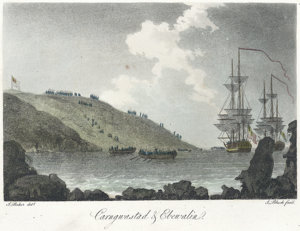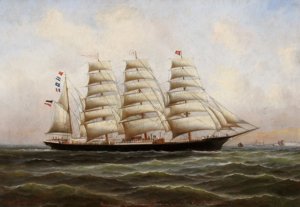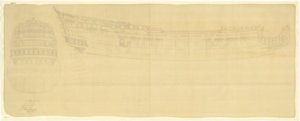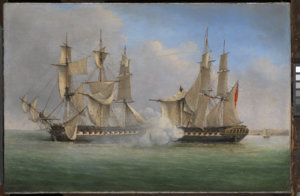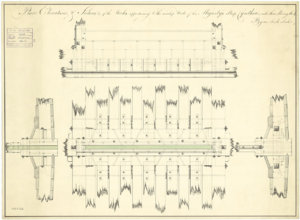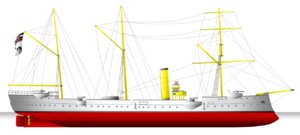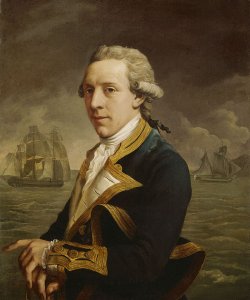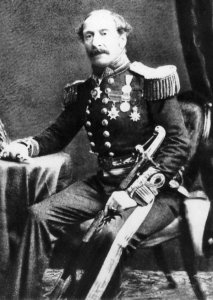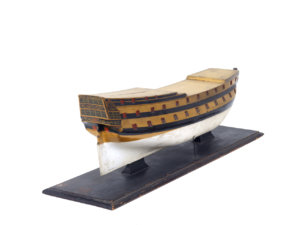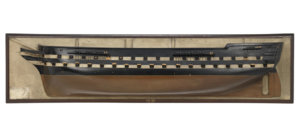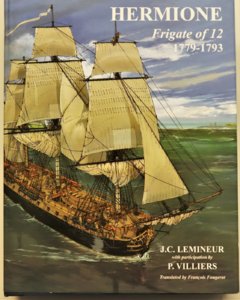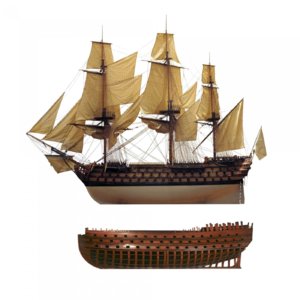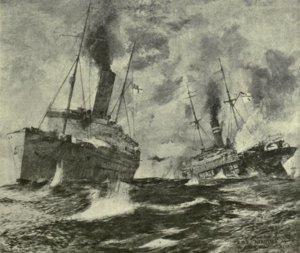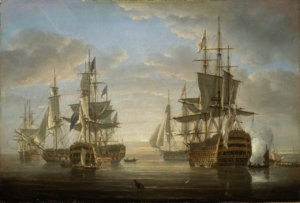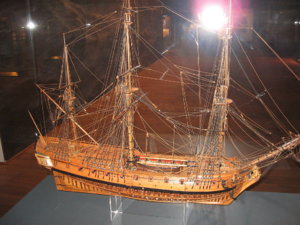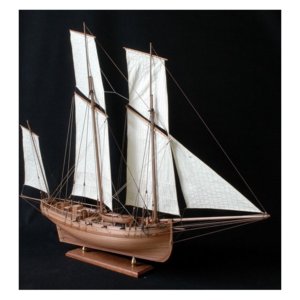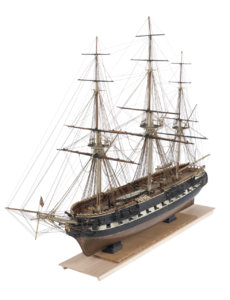Today in Naval History - Naval / Maritime Events in History
21st of February
please use the following link and you will find the details and all events of this day .....
1654 – Launch of the Winsby, later renamed HMS Happy Return, a 44-gun fourth-rate frigate of the English Royal Navy,
The Winsby was a 44-gun fourth-rate frigate of the English Royal Navy, originally built for the navy of the Commonwealth of England at Yarmouth, and launched in February 1654. the Winsby was named for the Parliamentarian victory at the Battle of Winceby.
After the restoration of the monarchy in 1660, she was renamed HMS Happy Return, as her name was incompatible with the restored Stuart monarchy. By 1677 her armament had been increased to 54 guns. Happy Return was captured by the French in 1691 and commissioned as French Third Rate ship of the line 'Heureux Retour' . In April 1708 recaptured by HMS Burford (70), but not re-added to English Navy

1705 – Birth of Edward Hawke, 1st Baron Hawke, English admiral and politician (d. 1781)
Admiral of the Fleet Edward Hawke, 1st Baron Hawke, KB, PC (21 February 1705 – 17 October 1781)[1] was a Royal Navy officer. As captain of the third-rate HMS Berwick he took part in the Battle of Toulon in February 1744 during the War of the Austrian Succession. He also captured six ships of a French squadron in the Bay of Biscay in the Second Battle of Cape Finisterre in October 1747.
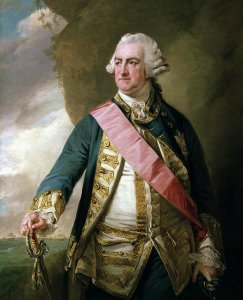
1759 - HMS Vestal (32), Cptn. Samuel Hood, took French frigate Bellona (1758 - 32) in the Channel
HMS Vestal was one of the four 32-gun Southampton-class fifth-rate frigates of the Royal Navy. She was launched in 1757 and was broken up in 1775.

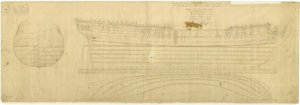
1793 - HMS Alligator (1787 - 28), Cptn. William Affleck, captures the French privateer Prend Tout in the North Sea
HMS Alligator was a 28-gun Enterprise-class sixth rate frigate of the Royal Navy. She was originally ordered during the American War of Independence but was completed too late to see service during the conflict. Instead she had an active career during the French Revolutionary and Napoleonic Wars.
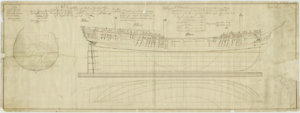
1814 – Launch of HMS Liverpool, a Royal Navy Endymion-class frigate, reclassified as a fourth rate.
HMS Liverpool was a Royal Navy Endymion-class frigate, reclassified as a fourth rate. She was built by Wigram, Wells and Green and launched at Woolwich on 21 February 1814. She was built of pitch-pine, which made for speedy construction at the expense of durability.
Her major service was on the East Indies Station from where in 1819 she led the successful punitive campaign against the Al Qasimi, a belligerent naval power based in Ras Al Khaimah which the British considered to be piratical. She was sold in 1822 but continued to operate in the Persian Gulf for an indefinite period thereafter.

1901 – Launch of HMS Bacchante, a Cressy-class armoured cruiser built for the Royal Navy
HMS Bacchante was a Cressy-class armoured cruiser built for the Royal Navy around 1900. Upon completion she was assigned to the Mediterranean Fleet as flagship of the fleet's cruiser squadron. She was reduced to reserve upon her return home in 1905 before returning to the Mediterranean in 1906. Six years later she returned home and was again placed in reserve. Recommissioned at the start of World War I, Bacchante became flagship of the 7th Cruiser Squadron. She was present at the Battle of Heligoland Bight a few weeks after the war began, but saw no combat.
She was transferred to convoy escort duties in the Bay of Biscay in late 1914 before being sent to Egypt in early 1915. Bacchante was then assigned to support Anzac troops during the Gallipoli Campaign by providing naval gunfire. She covered the landing at Anzac Cove in April as well as several subsequent operations. Returning home in late 1916, she became the flagship of the 9th Cruiser Squadron on convoy escort duties off the African coast in mid-1917. Bacchante remained there for the rest of the war and was reduced to reserve in 1919 before being sold for scrap in 1920.

1907 - the steamship SS Berlin was driven onto the granite breakwater at the New Waterway ship canal in the Netherlands by large waves and then broke apart. Of 144 people aboard, 128 were lost.
SS Berlin was a steel ship, which was owned by the Great Eastern Railway and built for use on their ferry service from Harwich and the Hook of Holland, which the company had initiated in 1893.
The Great Eastern Railway ordered three steamships to operate the service. The ships were named Amsterdam, Berlin, and Vienna to publicise some of the rail connections from the Hook of Holland. Berlin was built in 1894 by Earles Shipbuilding and Engineering Company of Hull. She had berths for 218 first- and 120 second-class passengers.

1914 – Launch of SMS Kronprinz, the last battleship of the four-ship König class of the German Imperial Navy.
SMS Kronprinz was the last battleship of the four-ship König class of the German Imperial Navy. The battleship was laid down in November 1911 and launched on 21 February 1914. She was formally commissioned into the Imperial Navy on 8 November 1914, just over 4 months after the start of World War I. The name Kronprinz (Eng: "Crown Prince") refers to Crown Prince Wilhelm, and in June 1918, the ship was renamed Kronprinz Wilhelm in his honor. The battleship was armed with ten 30.5-centimeter (12.0 in) guns in five twin turrets and could steam at a top speed of 21 knots (39 km/h; 24 mph).

SMS Kronprinz Wilhelm launched November 1914. Scuttled at Scapa Flow on on 21 June 1919.
1917 - passenger ship SS Mendi was taking members of the 5th Battalion, South African Native Labour Corps, to France.
At 05:00 hrs, while under the escort of the destroyer HMS Brisk, Mendi was struck and cut almost in half by SS Darro. Of 823 people aboard, 646 were lost.
SS Mendi was a British 4,230 GRT passenger steamship that was built in 1905 and, as a troopship, sank after collision with great loss of life in 1917.

More than 800 members of the South African Native Labour Corps were on board the Mendi at the time of the disaster
1939 – Launch of HMS King George V (pennant number 41), the lead ship of the five British King George V-class battleships of the Royal Navy.
HMS King George V (pennant number 41) was the lead ship of the five British King George V-class battleships of the Royal Navy. Laid down in 1937 and commissioned in 1940, King George V operated during the Second World War in all three major theatres of war, the Atlantic, Mediterranean and Pacific, as well as part of the British Home Fleet and Pacific Fleets. In May 1941, along with HMS Rodney, King George V was involved in the hunt for and pursuit of the German battleship Bismarck , eventually inflicting severe damage which led to the German vessel sinking. On 1 May 1942 the destroyer HMS Punjabi sank after a collision with King George V in foggy conditions. King George V took part in Operation Husky (the allied landings in Sicily) and bombarded the island of Levanzo and the port of Trapani. She also escorted part of the surrendered Italian Fleet, which included the battleships Andrea Doria and Caio Duilio, to Malta. In 1945 King George V took part in operations against the Japanese in the Pacific.

HMS King George V enters Apra Harbour, Guam with sailors on deck in 1945
1945 – World War II: During the Battle of Iwo Jima, Japanese kamikaze planes sink the escort carrier USS Bismarck Sea and damage the USS Saratoga.
USS Bismarck Sea (CVE-95) was a Casablanca class escort carrier of the United States Navy. She was launched on 17 April 1944 by Kaiser Co., Inc., Vancouver, Washington, under a Maritime Commission contract as Alikula Bay; sponsored by Mrs. M. C. Wallgren, wife of Senator Monrad Wallgren; renamed Bismarck Sea on 16 May 1944; transferred to the Navy on 20 May 1944; and commissioned the same day, with Captain J. L. Pratt in command.

21st of February
please use the following link and you will find the details and all events of this day .....
Naval/Maritime History - 27th of August - Today in Naval History - Naval / Maritime Events in History
Today in Naval History - Naval / Maritime Events in History 20 February 1920 – Death of Robert Peary, American admiral and explorer (b. 1856) Rear Admiral Robert Edwin Peary Sr. (/ˈpɪəri/; May 6, 1856 – February 20, 1920) was an American explorer and United States Navy officer who made several...
shipsofscale.com
1654 – Launch of the Winsby, later renamed HMS Happy Return, a 44-gun fourth-rate frigate of the English Royal Navy,
The Winsby was a 44-gun fourth-rate frigate of the English Royal Navy, originally built for the navy of the Commonwealth of England at Yarmouth, and launched in February 1654. the Winsby was named for the Parliamentarian victory at the Battle of Winceby.
After the restoration of the monarchy in 1660, she was renamed HMS Happy Return, as her name was incompatible with the restored Stuart monarchy. By 1677 her armament had been increased to 54 guns. Happy Return was captured by the French in 1691 and commissioned as French Third Rate ship of the line 'Heureux Retour' . In April 1708 recaptured by HMS Burford (70), but not re-added to English Navy
1705 – Birth of Edward Hawke, 1st Baron Hawke, English admiral and politician (d. 1781)
Admiral of the Fleet Edward Hawke, 1st Baron Hawke, KB, PC (21 February 1705 – 17 October 1781)[1] was a Royal Navy officer. As captain of the third-rate HMS Berwick he took part in the Battle of Toulon in February 1744 during the War of the Austrian Succession. He also captured six ships of a French squadron in the Bay of Biscay in the Second Battle of Cape Finisterre in October 1747.

1759 - HMS Vestal (32), Cptn. Samuel Hood, took French frigate Bellona (1758 - 32) in the Channel
HMS Vestal was one of the four 32-gun Southampton-class fifth-rate frigates of the Royal Navy. She was launched in 1757 and was broken up in 1775.

1793 - HMS Alligator (1787 - 28), Cptn. William Affleck, captures the French privateer Prend Tout in the North Sea
HMS Alligator was a 28-gun Enterprise-class sixth rate frigate of the Royal Navy. She was originally ordered during the American War of Independence but was completed too late to see service during the conflict. Instead she had an active career during the French Revolutionary and Napoleonic Wars.

1814 – Launch of HMS Liverpool, a Royal Navy Endymion-class frigate, reclassified as a fourth rate.
HMS Liverpool was a Royal Navy Endymion-class frigate, reclassified as a fourth rate. She was built by Wigram, Wells and Green and launched at Woolwich on 21 February 1814. She was built of pitch-pine, which made for speedy construction at the expense of durability.
Her major service was on the East Indies Station from where in 1819 she led the successful punitive campaign against the Al Qasimi, a belligerent naval power based in Ras Al Khaimah which the British considered to be piratical. She was sold in 1822 but continued to operate in the Persian Gulf for an indefinite period thereafter.
1901 – Launch of HMS Bacchante, a Cressy-class armoured cruiser built for the Royal Navy
HMS Bacchante was a Cressy-class armoured cruiser built for the Royal Navy around 1900. Upon completion she was assigned to the Mediterranean Fleet as flagship of the fleet's cruiser squadron. She was reduced to reserve upon her return home in 1905 before returning to the Mediterranean in 1906. Six years later she returned home and was again placed in reserve. Recommissioned at the start of World War I, Bacchante became flagship of the 7th Cruiser Squadron. She was present at the Battle of Heligoland Bight a few weeks after the war began, but saw no combat.
She was transferred to convoy escort duties in the Bay of Biscay in late 1914 before being sent to Egypt in early 1915. Bacchante was then assigned to support Anzac troops during the Gallipoli Campaign by providing naval gunfire. She covered the landing at Anzac Cove in April as well as several subsequent operations. Returning home in late 1916, she became the flagship of the 9th Cruiser Squadron on convoy escort duties off the African coast in mid-1917. Bacchante remained there for the rest of the war and was reduced to reserve in 1919 before being sold for scrap in 1920.
1907 - the steamship SS Berlin was driven onto the granite breakwater at the New Waterway ship canal in the Netherlands by large waves and then broke apart. Of 144 people aboard, 128 were lost.
SS Berlin was a steel ship, which was owned by the Great Eastern Railway and built for use on their ferry service from Harwich and the Hook of Holland, which the company had initiated in 1893.
The Great Eastern Railway ordered three steamships to operate the service. The ships were named Amsterdam, Berlin, and Vienna to publicise some of the rail connections from the Hook of Holland. Berlin was built in 1894 by Earles Shipbuilding and Engineering Company of Hull. She had berths for 218 first- and 120 second-class passengers.
1914 – Launch of SMS Kronprinz, the last battleship of the four-ship König class of the German Imperial Navy.
SMS Kronprinz was the last battleship of the four-ship König class of the German Imperial Navy. The battleship was laid down in November 1911 and launched on 21 February 1914. She was formally commissioned into the Imperial Navy on 8 November 1914, just over 4 months after the start of World War I. The name Kronprinz (Eng: "Crown Prince") refers to Crown Prince Wilhelm, and in June 1918, the ship was renamed Kronprinz Wilhelm in his honor. The battleship was armed with ten 30.5-centimeter (12.0 in) guns in five twin turrets and could steam at a top speed of 21 knots (39 km/h; 24 mph).
SMS Kronprinz Wilhelm launched November 1914. Scuttled at Scapa Flow on on 21 June 1919.
1917 - passenger ship SS Mendi was taking members of the 5th Battalion, South African Native Labour Corps, to France.
At 05:00 hrs, while under the escort of the destroyer HMS Brisk, Mendi was struck and cut almost in half by SS Darro. Of 823 people aboard, 646 were lost.
SS Mendi was a British 4,230 GRT passenger steamship that was built in 1905 and, as a troopship, sank after collision with great loss of life in 1917.
More than 800 members of the South African Native Labour Corps were on board the Mendi at the time of the disaster
1939 – Launch of HMS King George V (pennant number 41), the lead ship of the five British King George V-class battleships of the Royal Navy.
HMS King George V (pennant number 41) was the lead ship of the five British King George V-class battleships of the Royal Navy. Laid down in 1937 and commissioned in 1940, King George V operated during the Second World War in all three major theatres of war, the Atlantic, Mediterranean and Pacific, as well as part of the British Home Fleet and Pacific Fleets. In May 1941, along with HMS Rodney, King George V was involved in the hunt for and pursuit of the German battleship Bismarck , eventually inflicting severe damage which led to the German vessel sinking. On 1 May 1942 the destroyer HMS Punjabi sank after a collision with King George V in foggy conditions. King George V took part in Operation Husky (the allied landings in Sicily) and bombarded the island of Levanzo and the port of Trapani. She also escorted part of the surrendered Italian Fleet, which included the battleships Andrea Doria and Caio Duilio, to Malta. In 1945 King George V took part in operations against the Japanese in the Pacific.
HMS King George V enters Apra Harbour, Guam with sailors on deck in 1945
1945 – World War II: During the Battle of Iwo Jima, Japanese kamikaze planes sink the escort carrier USS Bismarck Sea and damage the USS Saratoga.
USS Bismarck Sea (CVE-95) was a Casablanca class escort carrier of the United States Navy. She was launched on 17 April 1944 by Kaiser Co., Inc., Vancouver, Washington, under a Maritime Commission contract as Alikula Bay; sponsored by Mrs. M. C. Wallgren, wife of Senator Monrad Wallgren; renamed Bismarck Sea on 16 May 1944; transferred to the Navy on 20 May 1944; and commissioned the same day, with Captain J. L. Pratt in command.



